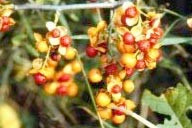 Loading... Please wait...
Loading... Please wait...- Home
- SEEDS
- SEED MIXES
- BUY PLANTS
- Info Request
-
Educational Videos
- Greenhouse Transplanting Demonstration
- Native Seed Cleaning demonstration at Ion Exchange Native Seed and Plant Nursery
- Attracting Butterflies
- Bidens - Bidens cernua Harvest Video
- Big Blue Stem Harvest
- Butterfly Milkweed Video
- Button Blazingstar - Liatris aspera Video
- Buttonbush - Cephalanthus occidentalis Video
- Canada Anemone - Anemone canadensis Harvest Video
- Cardinal Flower - Lobelia cardinalis Video
- Control Burn - Wildflower Field
- Cream Gentian - Gentiana flavida
- Culver's Root - Veronicastrum virginicum Video
- Cup Plant - Silphium perfoliatum Video
- Dormant Seeding | Planting
- Earthyman's Favorite Wildflowers Video
- Eco-Friendly Golf Course Seed Mix
- Floating Islands
- Fringed Loosestrife - Lysimachia ciliata Video
- Giant Yellow Hyssop - Agastache nepetoides Video
- Indiangrass - Sorghastrum nutans Video
- Iowa Prairie Partner Program
- Leadplant - Amorpha canescens (Potted) Video
- Meadow Blazingstar - Liatris ligulistylis
- Midland Shooting Stars - Dodecatheon meadii Video
- Native Plant Nursery Field Irrigation Experiment
- Nodding Onion - Allium cernuum Video
- Ohio spiderwort - Tradescantia ohiensis Video
- Old Man's Beard - Clematis virginiana blooms Video
- Oxeye Sunflower - Heliopsis helianthoides Video
- Prairie Spiderwort - Tradescantia bracteata
- Purple Coneflower - Echinacea purpurea Video
- Rain Garden or Water Garden Video
- Rattlesnake Master - Eryngium yuccifolium Video
- Riverbank Stabilization - Wetland Plants
- Rose Mallow - Hibiscus militaris Video
- Rosinweed - Silphium integrifolium Video
- Royal Catchfly - Silene regia
- Showy Tick Trefoil - Desmodium canadense Video
- Sneezeweed - Helenium autumnale Video
- Swamp Betony - Pedicularis lanceolata Video
- Swamp Milkweed - Asclepias incarnata Video
- Sweet Blackeyed Susan - Rudbeckia subtomentosa Video
- Tall Coreopsis - Coreopsis tripteris Video
- Urban Butterfly Garden
- Wild Bergamot - Monarda fistulosa Video
- Wild Geranium - Geranium maculatum Harvest
- Wild Goldenglow - Rudbeckia lanciniata Video
- Wild Petunia - Ruellia humilis Harvest Video
- Woodland Knotweed - Polygonum virginianum Video
- Yellow Coneflower - Ratibida pinnata Video
- Blog
- Resources
- Policies
Contact Us
Phone:
563-419-0837
or 563-535-7231
Email:
hbright@ionXchange.com
Browse Products
Add to Wish List
You Recently Viewed...
Our Newsletter
Product Description
Climbing Bittersweet, Climbing Orange Root, Fever Twig, Fever Twitch, Staff Vine, Waxwork
From the Greek for a type of evergreen plant and scandens from the Latin for climbing.
Found throughout the Tallgrass region, especially on rich, well-drained woodland soils. Very hearty, sturdy perrennial that can produce vines up to 30 feet long and an inch or more around at the base. The twisting, entwining stems of this species often kill saplings by restricting their growth as they wrap around their small trunks. Flowers are greenish-white, small and scentless and are borne on loose clusters at the branch tips up to 4 inches long. Bittersweet is noted for its colorful fruit, small, pea-sized berries that are wrinkled and brilliant orange. The berry has three sections and each section contains one or two seeds.
Native Americans used the shredded bark from Bittersweet to induce vomiting, treat venereal diseases, as a diuretic and to treat the symptoms of tuberculosis. It was mixed with animal fat to make a salve and treat skin cancers, tumors, burns and swelling. Berries were sometimes used to treat stomach ailments. The Menomini tribe used the berries mixed with other plants to relieve the pain of childbirth. An extract from the boiled bark provided an insecticide for early settlers of the Tallgrass Prairie, however it is not known just how effective this was.
| Sun Exposure | Prairie, Savanna |
| Soil Moisture | Mesic, Dry Mesic, Dry |
| Bloom Time |
Summer |
| Bloom Color | White |
| Max Height | up to 30 feet |
| Wetland Code | UPL |
| Germ Code | C(15)or L |
| Seeds Per Packet | 30 |
| Seeds Per Ounce | 1,800 |
Edible Uses: Bark and twigs - they must be cooked. The thickish bark is sweet and palatable after boiling. Another report says that it is the inner bark that is used, and that it is a starvation food, only used when other foods are in short supply. Some caution is advised in the use of this plant since there are suggestions of toxicity.
Medicinal Uses: Climbing bittersweet was employed medicinally by a number of native North American Indian tribes, though it is scarcely used in modern herbalism.
The root is diaphoretic, diuretic and emetic. It is a folk remedy for chronic liver and skin ailments (including skin cancer), rheumatism, leucorrhoea, dysentery and suppressed menses. A strong compound infusion, usually combined with raspberry leaf tea, has been used to reduce the pain of childbirth. A poultice of the boiled root has been used to treat obstinate sores, skin eruptions etc. Externally, the bark is used as an ointment on burns, scrapes and skin eruption. Extracts of the bark are thought to be cardioactive.
Many plants in this genus contain compounds of interest for their antitumour activity.
Herbal Uses: Unknown






